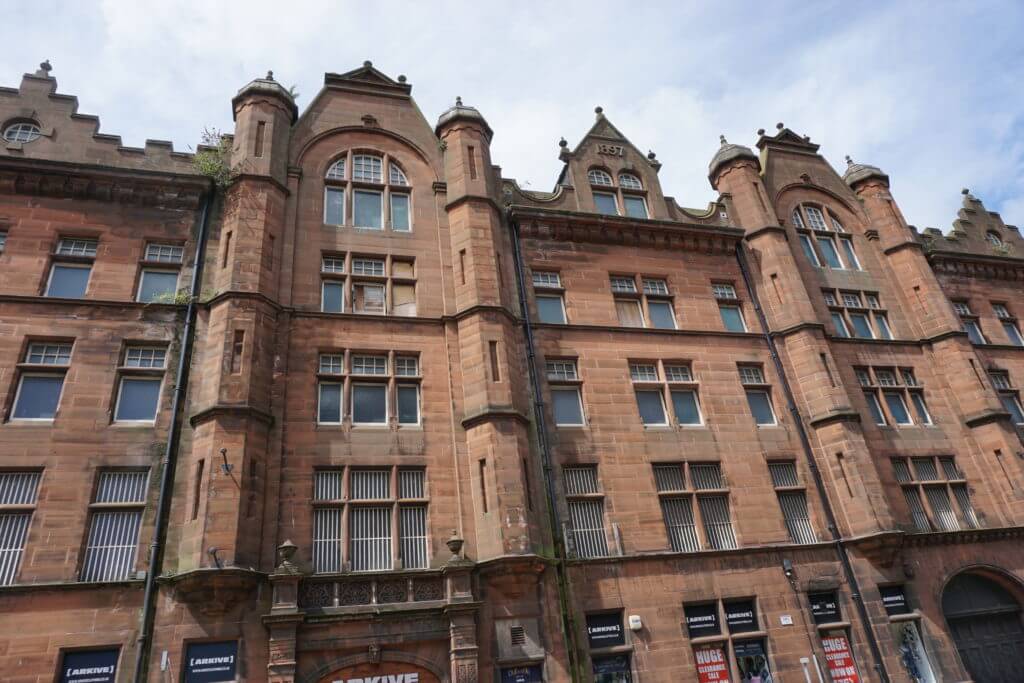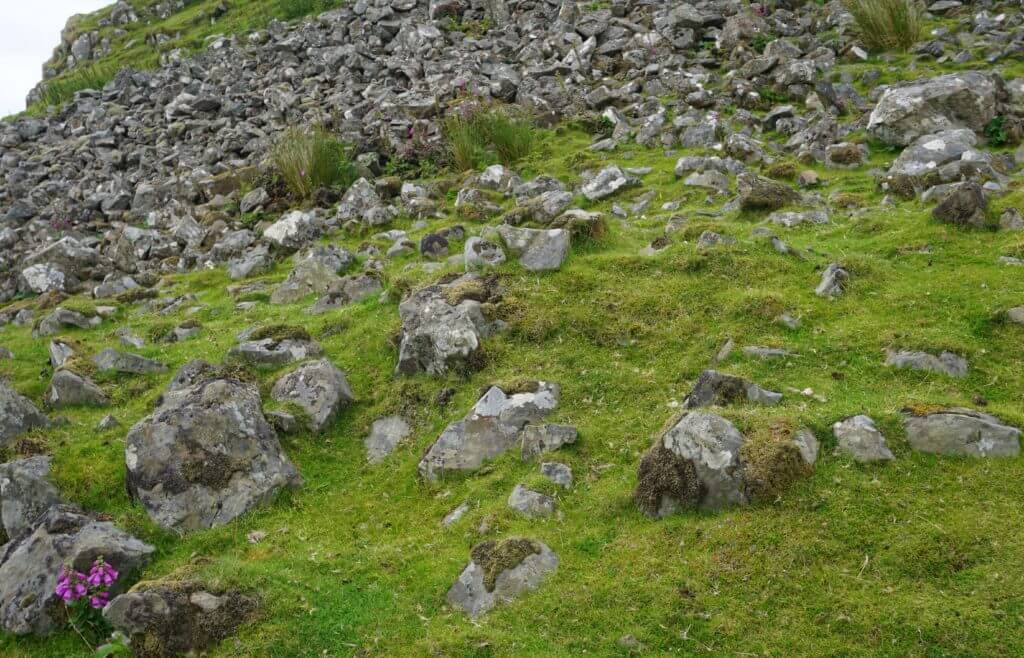
SCOTLAND – When we arrived in Edinburgh in June we were impressed by how many stone buildings there were all over the city. Not just the castles, but public buildings, private homes, storefronts, monuments and more.

You also see stone walls everywhere in Scotland… along every street and roadway, enclosing individual yards and gardens, and around every field and pasture. Stones, stones and more stones.
In Edinburgh, the building stone colors include every shade of tan and brown, with occasional reds and grays.
In Dundee, we saw beautifully carved embellishments on buildings crafted in brown sandstone.

And in Aberdeen, the so-called “silver city,” the buildings were constructed of uniformly gray granite (our guidebook mentioned how the stone sparkled like silver on a sunny day – too bad it was cloudy and rainy for most of our stay).
Residents have been building with stone for 5,000 years
While these “modern” stone buildings date back “only” to around the 12th century (St. Margaret’s Chapel, built around 1130 at Edinburgh Castle, is recognized at Edinburgh’s oldest building), residents of Scotland and its Isles have been using stone as a building material for some 5,000 years or more.
A couple weeks ago we visited the Ness of Brodgar on Orkney Island, a prehistoric Neolithic site where an archaeological dig has been going on since the site’s accidental discovery in 2003. Experts date the site’s origins to around 3200 BC, and believe it was in use for more than 1,000 years.
Our weeklong visit to Orkney just happened to coincide with one of the dig’s two annual Open Days, when they invite the public to come out to the site and hear presentations by the archaeologists, see demonstrations of Neolithic stone-working and cooking techniques, and generally learn about the latest theories and discoveries at the site.
Researchers are only able to work at the site for two months out of the year (July and August) because of the extreme weather conditions the rest of the year. We had a beautiful sunny day for our visit, so we had a great closeup view of all the work that was going on.
It was still quite windy, with sustained 28-mile-an-hour winds and occasional higher gusts that would very nearly blow you over.
To date, more than two dozen stone structures have been discovered at the site, some of which are built upon the remains of earlier structures below. Some evidence of the structural use of wood has been found (post holes), but the primary building material used throughout the site is stone.

Diggers at the site have uncovered stone tools and other worked stone objects, and some of the stones used in the construction have carved images and incised runes on them.
Despite the years of research that have already been completed, the archaeologists on-site repeatedly told us, “We’ll never really know for sure what this site was used for; the current theory is… but that could change at any time as we unearth more of the structures.”
One thing is known for certain. Residents of the Scottish Isles have been building with stone for a very long time!

Do you love archaeology? Please follow us on FaceBook.
